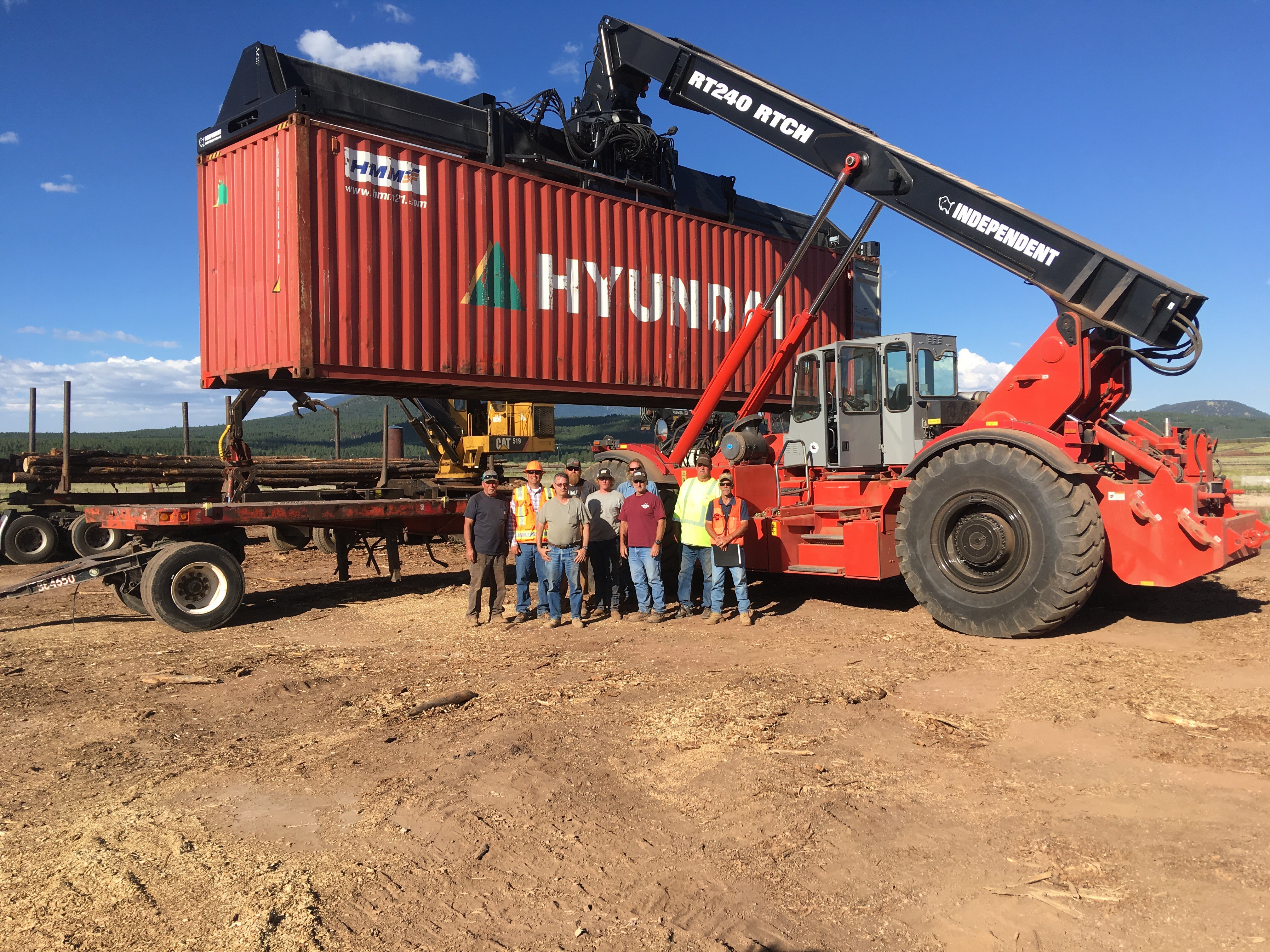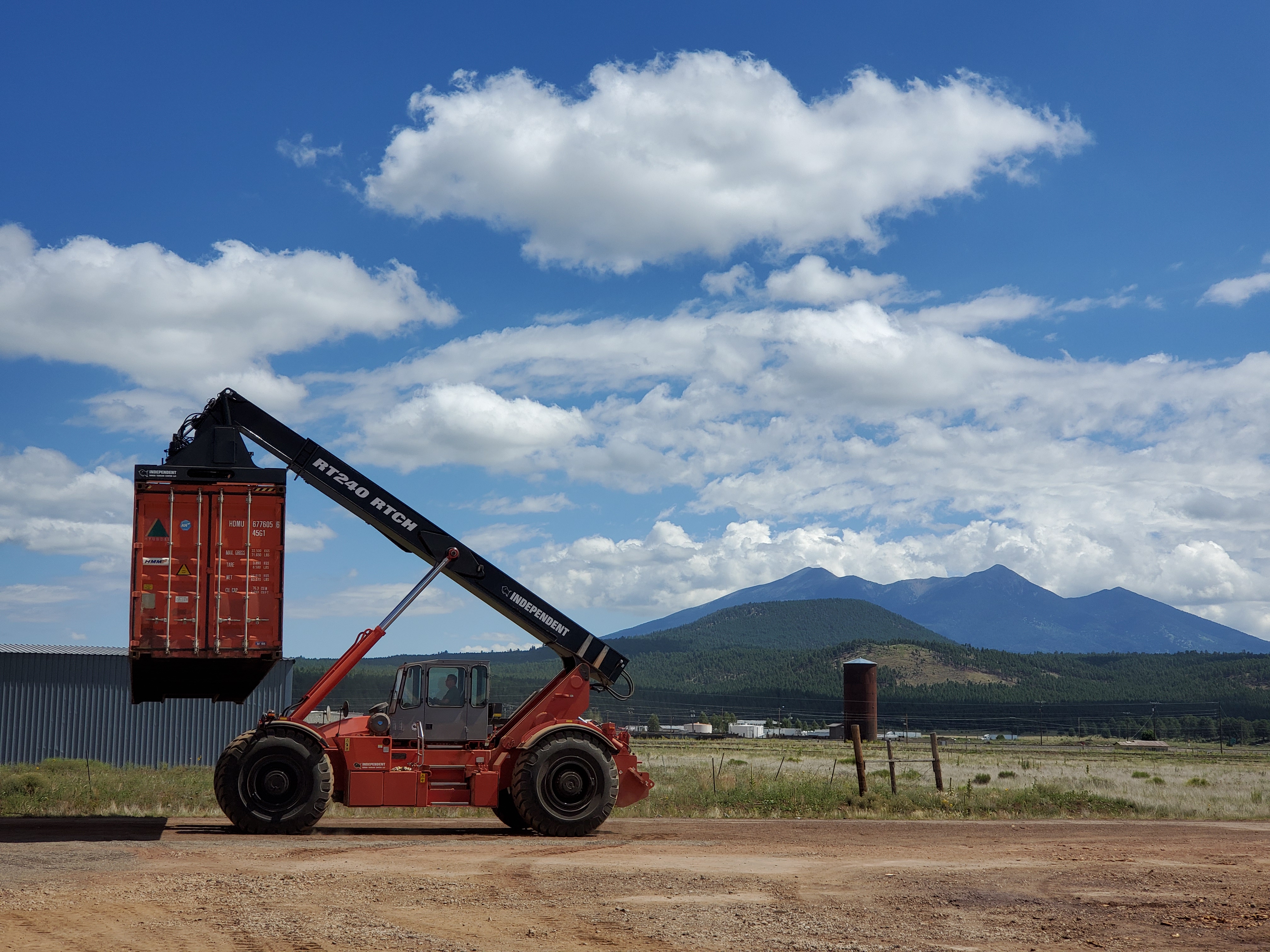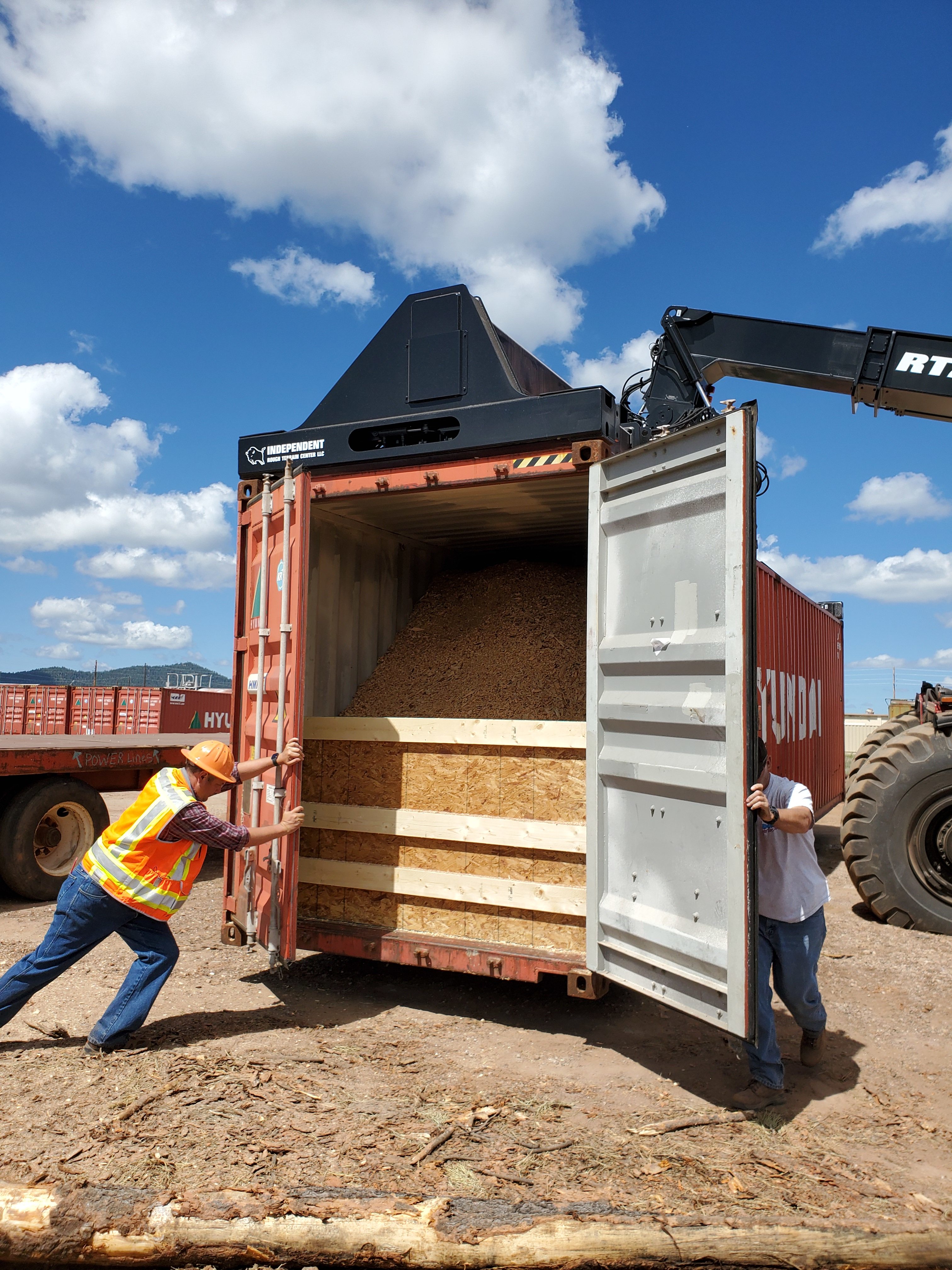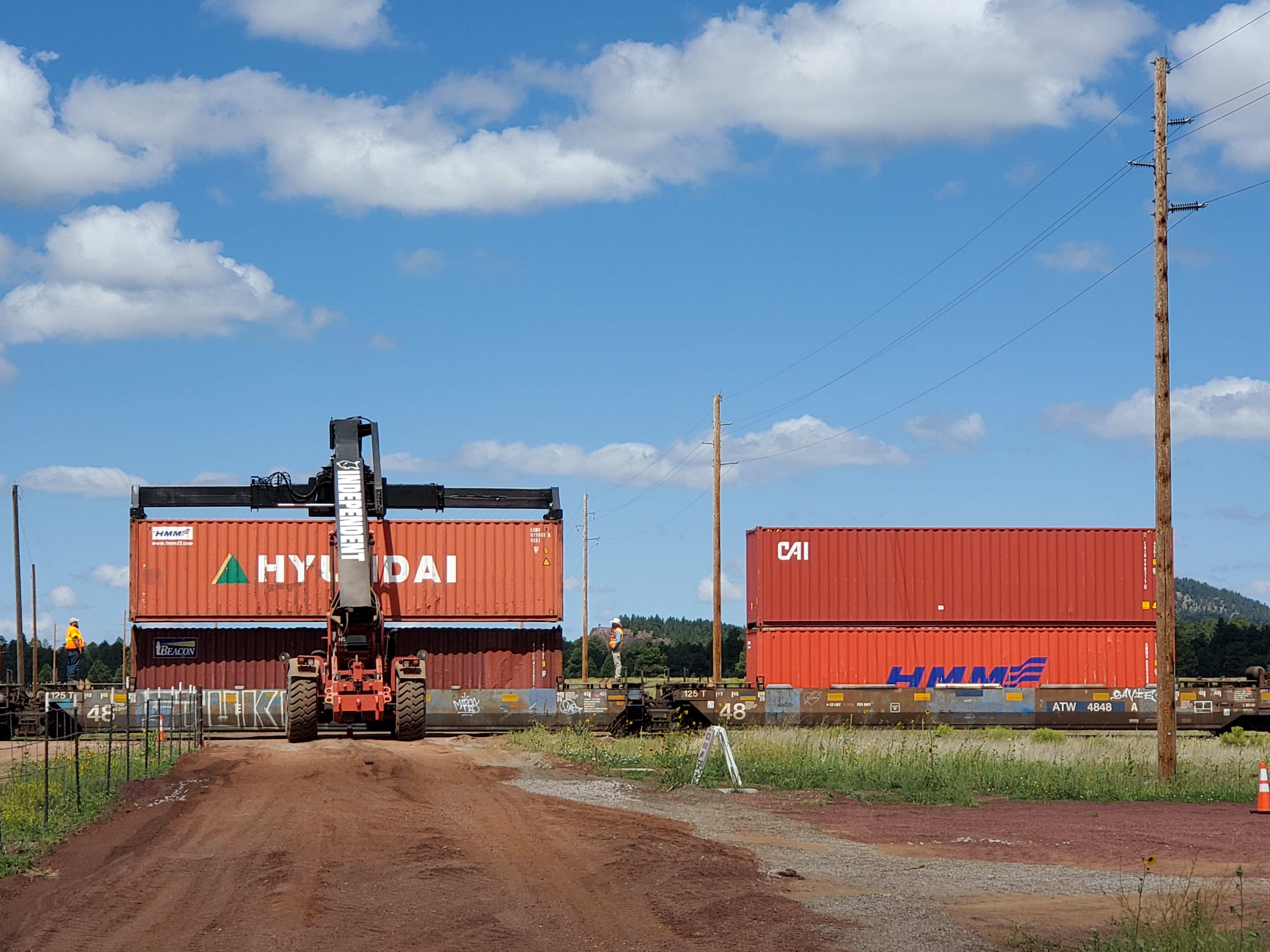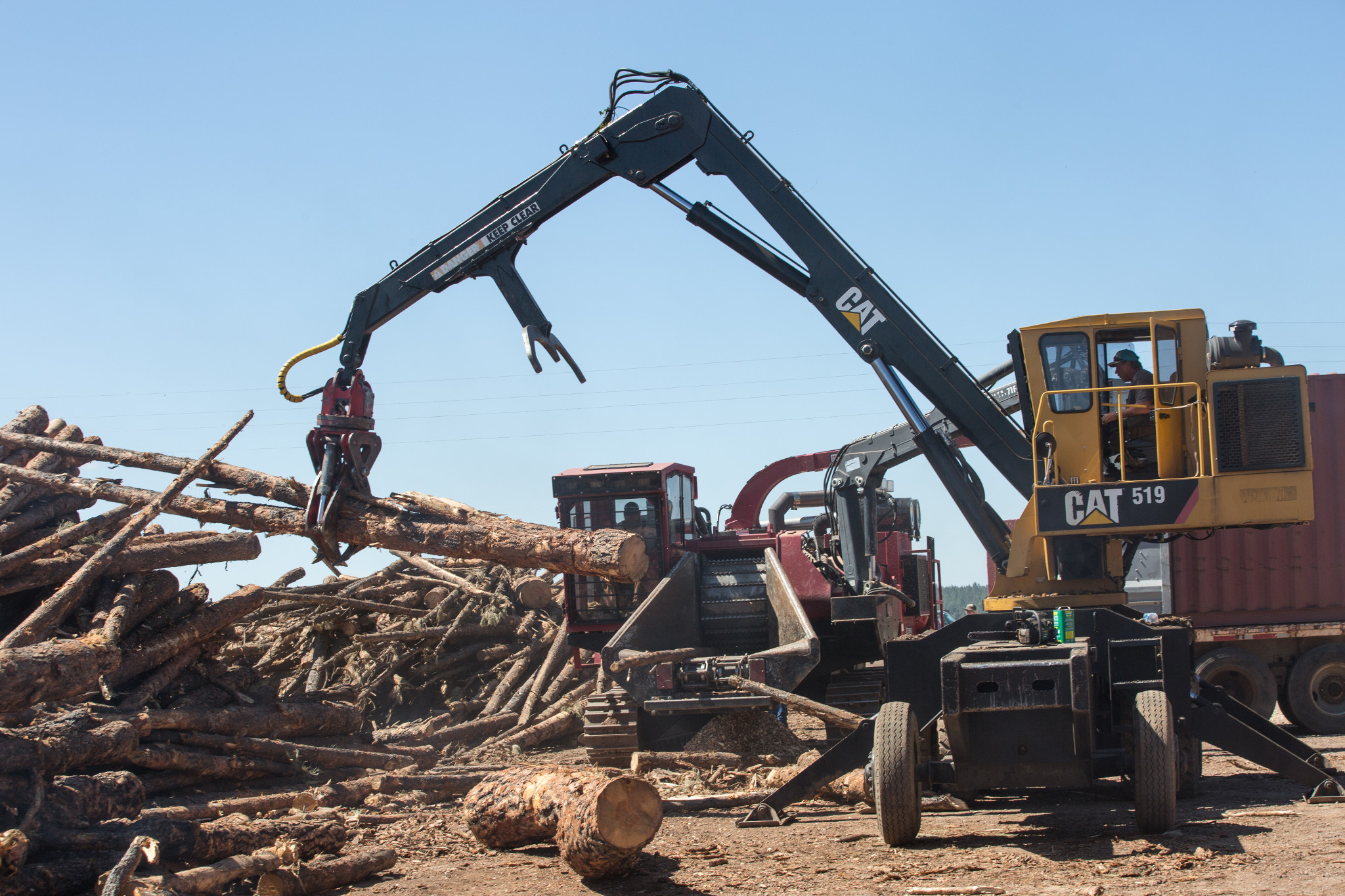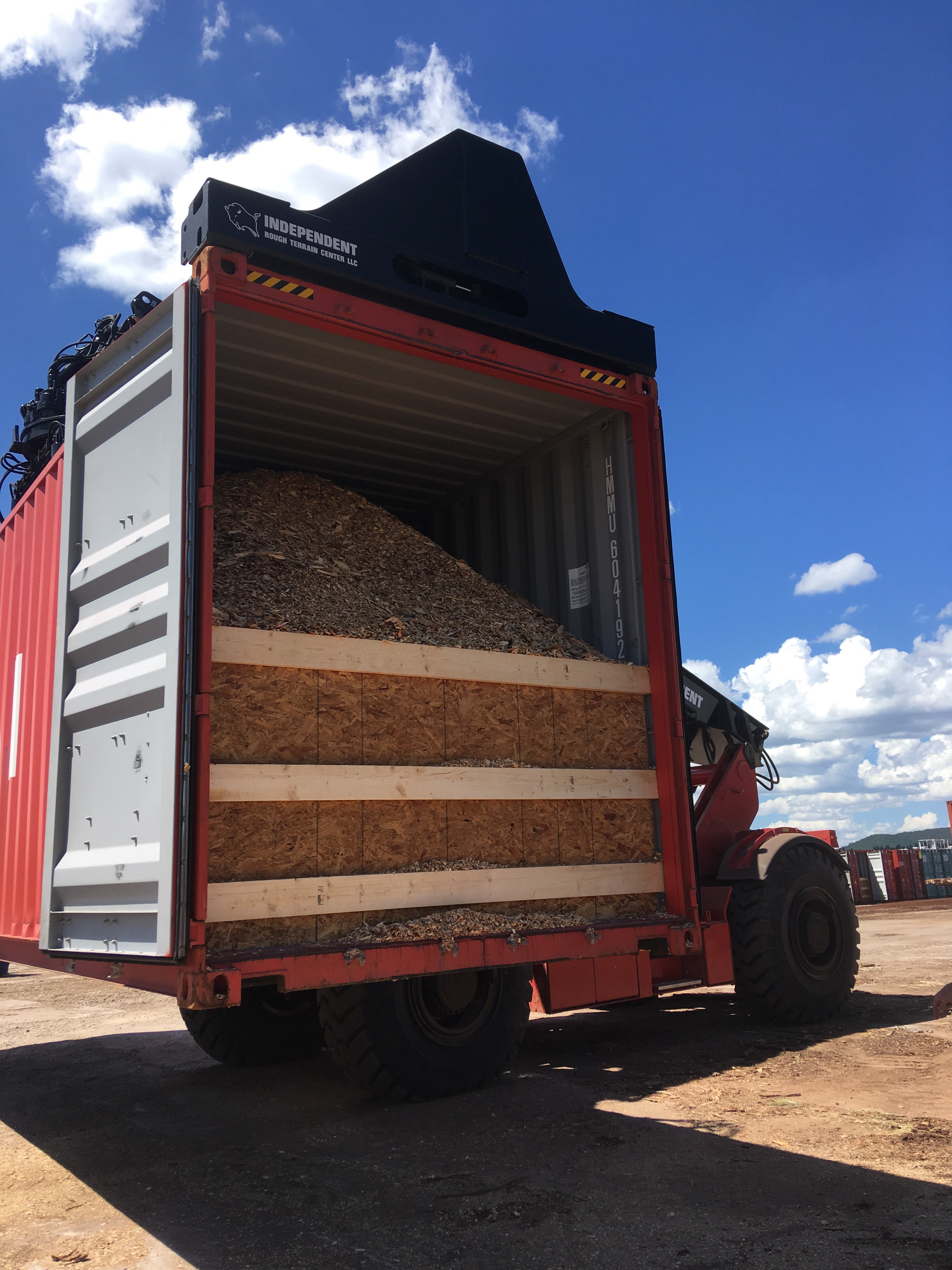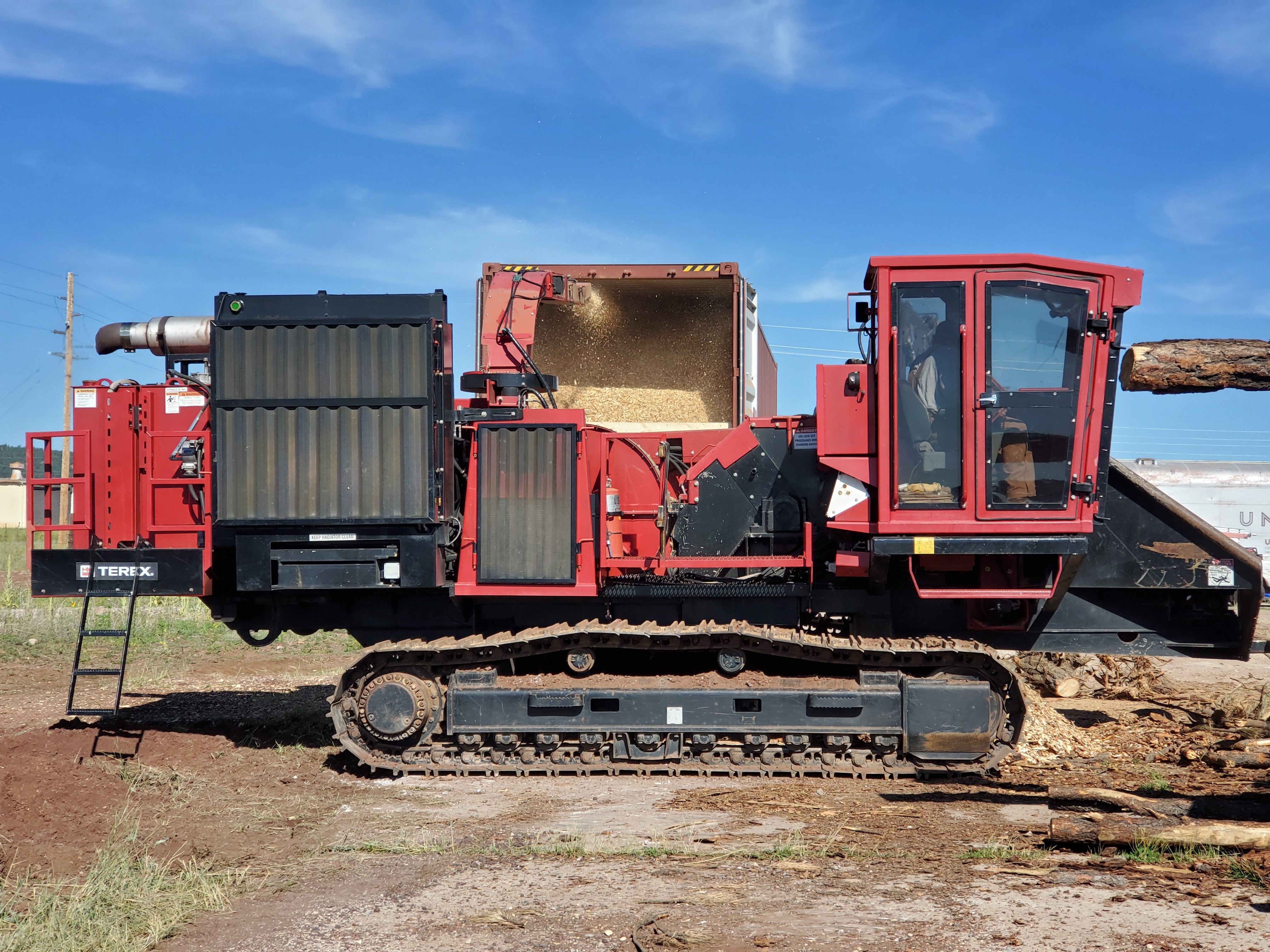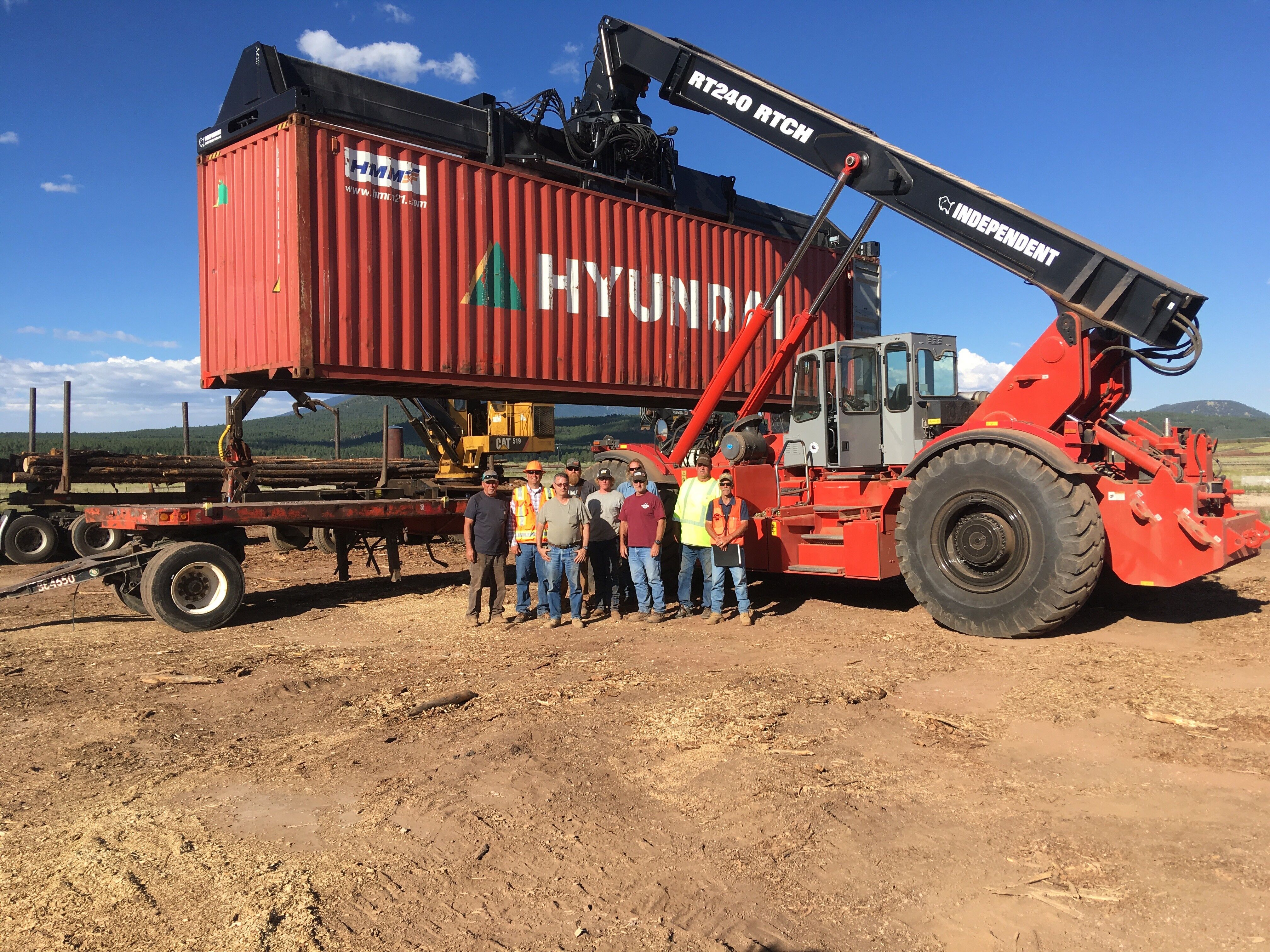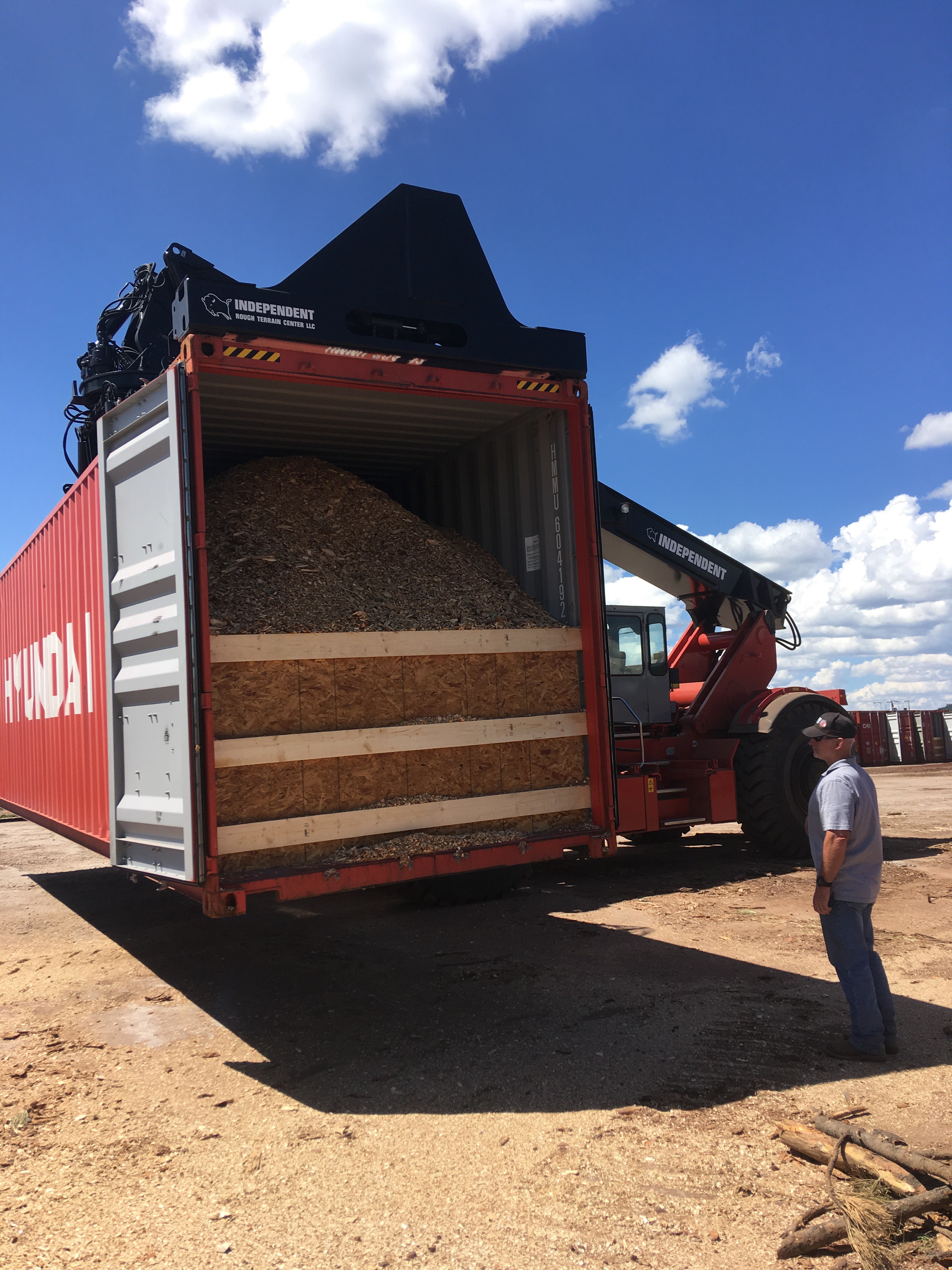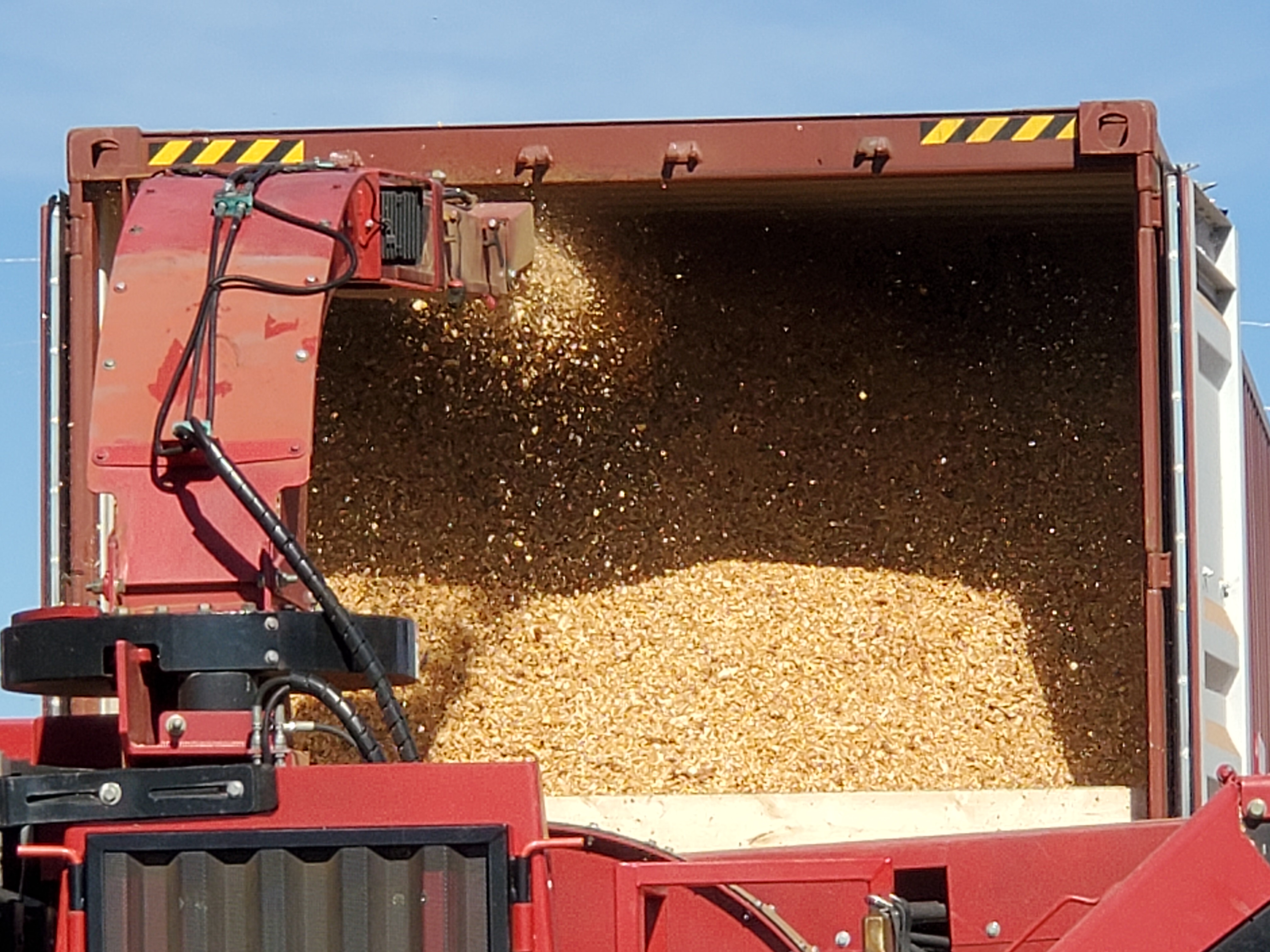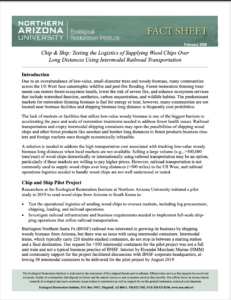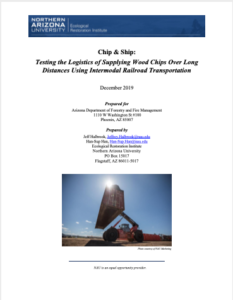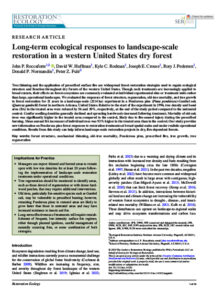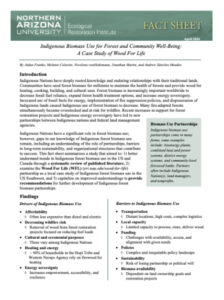Chip-and-Ship Project
A pilot project led by ERI’s professor Han-Sup Han and research associate Jeff Halbrook has the potential to unlock a critical bottleneck in forest restoration and wildfire prevention efforts across northern Arizona.
The pilot project tested the logistics and efficacy of chipping and shipping wood products via railway transportation. The goal is to expand forest product markets domestically and internationally. If successful, the project will create markets for restoration byproducts, like boards, shavings, sawdust, and wood chips from small-diameter trees, and protect communities from catastrophic wildfire and post-fire flooding by speeding forest restoration efforts in Arizona.
The first phase of the project took place at Camp Navajo over the course of eight days in August 2019. It included chipping 1,150 tons of small-diameter logs extracted from forest restoration projects like the Four Forest Restoration Initiative, which has struggled to find markets for the low-value wood removed from its thinning efforts. The wood chips were then loaded onto 58 shipping containers and transported to South Korea via railway and cargo ships.
A report on findings was released December 2019, and can be accessed here. For more information, contact Director of Forest Operations and Biomass Utilization Dr. Han-Sup Han at Han-Sup.Han@nau.edu.
Read more about the project in the news.
Long-term ecological responses to landscape-scale restoration in a western United States dry forest
Tree thinning and prescribed surface fire are common forest restoration strategies in the dry forests of the western United States. These treatments are often assessed at small scales rather than across large areas. This study evaluated forest structure, regeneration, old-tree mortality, and tree growth over 21 years in a large (2114 ha) Ponderosa pine-Gambel oak forest in northern Arizona. By the end of the study, tree density and basal area in the treated area were reduced by 56% and 38%, respectively, compared to the untreated control. Conifer seedling densities generally declined while hardwood sprouting increased post-treatment. Old oak tree mortality was higher in the treated area, likely due to fire injury. The mean annual basal area increment of individual trees was 93% higher in the treated area than in the control. These findings offer valuable insights for large-scale restoration efforts in dry, fire-dependent forests.
Return on investments in restoration and fuel treatments in frequent-fire forests of the American west: A meta-analysis
Arid forests in the American West are overly dense and need fuel reduction and fire regime restoration. Forest restoration efforts, such as thinning and prescribed burning, aim to reduce wildfire risks. Despite their importance, the cost-effectiveness of these programs is not well understood. This study conducted a meta-analysis of 120 observations from 16 studies over the past two decades to evaluate the benefits and costs of forest restoration and fuel treatments. Results showed significant variation in benefits, from enhanced ecosystem services to avoided wildfire costs. In high-value, at-risk watersheds, every dollar invested in restoration yielded up to seven dollars in benefits, achieving a 600% return on investment.

